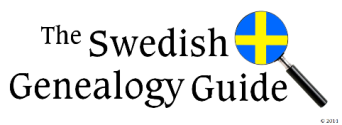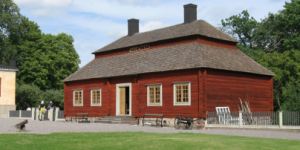While reading Börja forska kring ditt hus och din bygd, I learned some interesting things about farms in Sweden. In the middle of the 1700’s there were about 187,000 farms in Sweden. By 1870 there were 234,000. On every farm you had the family who owned or leased the farm along with servants (usually from the younger working class who probably came from nearby.) Often the farms had smaller leased torps or backstugor associated to them.
Each farm had a ownership status ranked in a system called “jordnatur”. There were 3 types of farms within jordnatur:
Skattegård – were independently owned farms. The owner paid taxes directly to the government.
Kronogård – were owned by the government and leased to the farmer.
Frälsegård – were owned by the nobility and leased to the farmer.
In 1700 each group was about the same size, 1/3 Skatte, 1/3 Krono, and 1/3 Frälsegård. Over time the government sold Kronogårds to independent farmers using transactions called Skatteköp. This continued so by the late 1800’s about 60% of the farms were Skattegård. At that time the Frälsegård still made up about 1/3 of the farms especially in Mälardalen, Östergötland, and Skåne.
Knowing this helps to understand the social standing of your Swedish ancestors. The household examinations show the occupation of the head of household. If your ancestor was listed as a Skattegårdsman (or Skattebonde), the farm was privately owned. The Kronogårdsman (or Kronobonde) had a lease to a government owned farm, and the Frälsegårdsman (or Frälsebonde) had a lease to a farm owned by the nobility.
Source: Börja forska kring ditt hus och din bygd, by Per Clemmensson and Kjell Andersson.
Picture: from Skogaholm manor at Skansen in Stockholm, taken by GFröbergMorris in 2008

